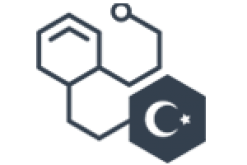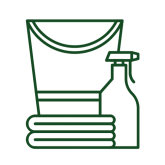CHEMICAL SAFETY REPORT (CSR)
Content addition date : 30-05-2025
The Chemical Safety Report (CSR) is a document that compiles and presents the information required for the safe use of a chemical substance. In other words, the CSR is a report that contains the information obtained during the Chemical Safety Assessment (CSA) process and provides detailed information about potential hazards and how to manage them. The CSR can include information such as the substance’s properties, hazards, necessary precautions for safe use, emergency procedures, etc. These reports serve as an important guide for the producers, distributors, and users of the chemical substance.
The Chemical Safety Report (CSR) is one of the main components of the KKDIK registration dossier. The registration dossier contains the information submitted by the registrant to comply with the registration requirements for a specific substance. Another component of the registration dossier is the technical dossier entered into the KKS portal.
The CSR consists of two main parts: Part A and Part B.
Part A includes information about risk management measures and how these measures are implemented. The topics included are:
► Summary of Risk Management Measures (RMM): A general overview of the measures taken to ensure the safe use of the chemical substance and how they are applied.
► Declaration of Implementation of RMM: An official declaration that risk management measures have actually been implemented.
► Declaration of Communication of RMM: A declaration that the risk management measures have been communicated to the relevant parties (e.g., producers, distributors).
Part B is automatically generated by a module in the KKS and informs the assessment. Part B consists of 8 headings, and in some cases, 10 headings. The first 8 of these headings are mandatory for all chemical substances. The last two headings are mandatory for substances classified as PBT/vPvB and hazardous. The headings of Part B are as follows:
► Substance Identification, Physical and Chemical Properties: The definition of the chemical substance and its physical and chemical properties.
► Manufacture and Use: How the chemical substance is produced and its areas of use.
► Classification and Labeling: The hazard classifications of the chemical substance and labeling information.
► Environmental Behavior Characteristics: The substance’s behavior in the environment, such as solubility and bioaccumulation.
► Human Health Hazard Assessment: The evaluation of potential harms the substance may cause to human health.
► Physicochemical Hazard Assessment for Human Health: The potential health effects of the physicochemical properties.
► Environmental Hazard Assessment: The evaluation of the chemical substance’s potential to harm the environment.
► PBT and vPvB Assessment: Evaluations for persistent, bioaccumulative, and toxic substances, as well as very persistent and very bioaccumulative substances.
► Exposure Assessment (and Related Risk Characterization): The assessment of the conditions under which, at what levels, and by whom the chemical substance is exposed.
► Combined Exposure Risk Characterization: A risk assessment that examines the combined effects of different exposure scenarios.
Since the CSR will be communicated to registrants and the lower parts of the supply chain, it must be clear and understandable. The assumptions made and the conclusions reached should be transparent.
The CSR contains vital information that must be communicated to all stakeholders in the supply chain, especially to the workers, users, and distributors involved in all stages where the chemical substance is used. Therefore, it is crucial that the report is clear and comprehensible. Moreover, the assumptions and results in the CSR should be presented transparently.
Chemical Safety Reports are not only a legal requirement but also help reduce the potential harms of chemical substances to the environment and human health and provide science-based solutions for safe use.
















